#can oil glands cause acne
Text
What is an oil gland? How does the sebaceous gland (lipoma) pass? 2023
New Post has been published on https://bankakredin.com/what-is-an-oil-gland-how-does-the-sebaceous-gland-lipoma-pass-2023/
What is an oil gland? How does the sebaceous gland (lipoma) pass? 2023
Sebaceous glands , medical term lipomaThey are fat-filled and usually small, tumor-like formations that occur in any part of the body. The sebaceous glands, which can be of various sizes, are surrounded by a capsule and are visible in white-yellow colors. While fat formation can be observed at any age in adulthood, the incidence of this problem in children is quite low.
Sebaceous glands located in visible parts of the body are generally undesirable because they disturb the individual visually. Methods such as squeezing these glands at home and emptying them with a needle both pose a risk of infection and cause scarring in the area where the oil gland is located. For this reason, the procedures to be performed for the removal of the oil glands must be carried out by the physician in a health institution using appropriate equipment.
What is an oil gland?
The encapsulation of the fat deposits in the body by settling under the skin results in the formation of sebaceous glands, also called lipomas. These glands, which can also be described as a simple form of tumor, are generally benign and do not cause any health problems, except for disturbing people in terms of appearance.
While sebaceous glands can be seen in all parts of the body, it most commonly occurs on the face, shoulders, scalp, genital area, neck and back. Many have a soft texture and feel as if they are moving when pressed by hand. This is because they are not fully integrated with the skin. Although sebaceous glands are a problem that can be seen in people of all ages, it is rarely seen in children.
They usually do not cause pain. Pain in these types of glands, It is usually a condition that indicates that the sebaceous gland requires medical attention. Fat cells, which grow and multiply over time, like all cells, can in some cases cause the size of the sebaceous glands to get out of control and to overgrow. In these cases, it is necessary to remove the growing oil glands with the help of surgical operations.
What are the symptoms of sebaceous glands?
The first and most characteristic symptom of sebaceous glands is swelling in the tissue where the gland develops. This swelling can grow slowly and continuously. While the oil glands in the face vary from the size of a pinhead to a few millimeters, the swellings that occur in areas such as the back and neck are larger and deeper.
Again, in the formation of under-eye oil glands on the face and oil gland formation on the eyelid, it is possible that the oil mass inside can be easily seen due to the fact that the gland is white-yellow in color and the skin covering it is very thin. In deep sebaceous glands formed in other parts of the body, since the gland is located in the lower layers of the skin, only swelling is felt, the fat layer cannot be seen from the outside.
They usually do not cause pain. But if the meringue is hit, In case of infection or malignancy, the sebaceous glands may cause pain or discharge over time. Especially in cases of rapid growth, color change, redness and severe pain, lipomas should be removed with the help of surgical procedures and sent for pathological examination.
What causes oil glands?
The exact cause of the formation of oil glands is not known. However, there are some issues that are known to increase the probability of occurrence. Some of the factors that predispose to the formation of sebaceous glands are as follows:
Genetic predisposition
Impact of the skin
High cholesterol and triglyceride levels
metabolic diseases
Unhealthy eating
advanced age
Insulin resistance and diabetes
Liver diseases
Obesity
What are the types of oil glands?
Oil glands are examined under 3 different groups according to their structures. These are as follows:
Sebaceous cysts: Sebaceous cysts , which are commonly seen on the scalp, are not completely glandular, but consist of a fluid fat mass and a very thin layer of skin covering it.
Benign adipose tissue tumors: Adipose tissue tumors , which have a glandular structure commonly seen in the neck and back regions, are generally benign and fall into this group. The fat mass in it is light yellow in color and has a hard structure. Just like other types of cysts, they can reach large sizes and therefore need to be surgically removed.
Malignant adipose tissue tumors: Masses formed as a result of cancerization of the subcutaneous fatty tissue are called malignant adipose tissue tumors. The fluid in these tumors, also called liposarcoma, has a yellow to grayish color. This rare type of sebaceous gland is softer and must be removed with the help of surgical operations.
Apart from the above grouping, the under-eye oil glands are also divided into three. These are examined under 3 subheadings: thin layers of fat called xanthelasma, which occur due to high cholesterol, small round fat cysts called syringoma, and miliums that are smaller than syringoma and have a fainter appearance.
How is the diagnosis of sebaceous gland made?
Visible sebaceous glands can only be detected by physicians by physical examination. Sebaceous cysts usually have a round structure, a spot in the middle and a slightly reddened appearance. In many types of sebaceous glands, the fat mass under the skin is displaced when pressed by hand. A fixed swelling that does not move easily may indicate a different disease.
Although it may vary according to the region where it occurs, lipomas generally have a soft structure and may change shape when pressed during manual examination. In the diagnosis of larger and hard sebaceous glands, the diagnosis can be supported by ultrasonographic imaging in order not to be confused with different diseases with similar appearance.
How is the oil gland treatment done?
Almost 99% of the sebaceous glands are benign and do not tend to become cancerous. However, especially the oil glands in visible parts of the body such as the face and neck do not look aesthetically pleasing and cause discomfort in patients. In addition, although adipose tissue tumors in the back region do not pose any risk to health, they can cause pain due to pressure in situations such as leaning back and using a backpack.
Infection may develop as a result of blows in some oil glands or spontaneously, and accordingly symptoms such as pain, redness, discharge and fever may occur. In all these cases, the glands should be removed with the help of a simple surgical operation, also known as oil gland removal.
This operation is performed under local anesthesia. usually completed in less than half an hour. It does not require hospitalization, patients can be discharged on the same day and return to their daily lives the next day.
In cases where the sebaceous glands do not cause any discomfort to the individual in terms of aesthetic appearance or health, they may not need to be removed. However, it should be kept in mind that these masses may be malignant, albeit very rarely. For this reason, in some cases, a biopsy can be taken for masses that are suspected to be cancerous or that tend to grow rapidly.
By performing a pathological examination of this sample, it can be determined whether the mass is benign or malignant, and the next treatment process can be planned according to this result. If you have sebaceous glands in any part of your body and are wondering how the sebaceous glands go away, you can go through a doctor’s control by applying to a health institution and get rid of the sebaceous glands that bother you.
oil gland,are oil glands part of the integumentary system,are oil glands located in the epidermis,are oil glands in the epidermis,are oil glands,where are oil glands in eyes,where are oil glands located,what are oil glands called,where are oil glands located in the skin,where are oil glands on face,where are oil glands found,can oil glands be removed,bacterial infection of an eyelid oil gland codycross,what is an oil gland cyst,an inflammation of oil gland caused by a bacteria,what causes an infected oil gland,an oil gland is called,can oil glands cause acne,do chickens have an oil gland,can you pop a clogged oil gland,
#an inflammation of oil gland caused by a bacteria#an oil gland is called#are oil glands#are oil glands in the epidermis#are oil glands located in the epidermis#are oil glands part of the integumentary system#bacterial infection of an eyelid oil gland codycross#can oil glands be removed#can oil glands cause acne#can you pop a clogged oil gland#do chickens have an oil gland#oil gland#what are oil glands called#what causes an infected oil gland#what is an oil gland cyst#where are oil glands found#where are oil glands in eyes#where are oil glands located#where are oil glands located in the skin#where are oil glands on face
0 notes
Note
Hi sex witch!
I've been taking testerone for about 5 months now. For about a month or so now ive been getting a lot of spots develop in and around both my vulva and vagina. It's never truly bothersome (except when im masturbating ig bevause they're quite sore), and they go away after a little while but they consistently come back.
I initially figured that it's just because of normal hormone changes and is as to be expected, but i thought i should also check with someone to be safe. Do you think this is something i should be concerned about and if so is there anything i should be doing to take better care of it? Is it just bad hygiene on my part?
Thanks a lot for all your help!
hey anon,
although it is important to keep your vulva clean (doubly so because of some of the effects of taking T, which we're going to discuss in a second), you can stop worrying that this a personal hygiene problem. it's probably quite a bit more complicated than that!
by scouring one of my most reliable resources (the depths of trans reddit) I've got a couple of possibilities for you:
straight up acne. an influx of testosterone can cause acne outbreaks anywhere and everywhere, including on the vulva. definitely consistent with your spots coming and going, as well as the sensitivity? could definitely be worsened by sweat if testosterone is making you sweaty, as it does to so many people. a DIY hot compress is easy to make and can help clear up stubborn, painful acne.
fordyce spots. these are caused by, basically, a condition that makes your oil glands overgrow, similar to acne but generally without irritation. however, the spots can be itchy to the touch, which may explain your discomfort while masturbating? note that these are most common during the hormonal shifts of puberty, which very much includes the induced second puberty of hormone replacement.
ingrown hairs. once again, would explain the coming and going, as well as the sensitivity! this is common for a lot of people on T experiencing new hair growth, and can be helped by just giving your pubic hair regular trims with clean scissors. shaving can be harsh on your skin and cause the hair to grow back in ways that are more likely to become ingrown, but a little snip is much easier on your body and likely to help clear that right up.
28 notes
·
View notes
Text
hey have any trans men / transmascs tried clascoterone (winlevi) for their acne?
they just came out with this new topical medication and i think it’s a MASSIVE w for trans guys. it was recently approved by the FDA in august 2020 and just became available last year. it’s different from other anti-acne medication in that it specifically targets hormone receptors. hormonal acne does not always respond to antibiotics, which many trans men have probably experienced firsthand.
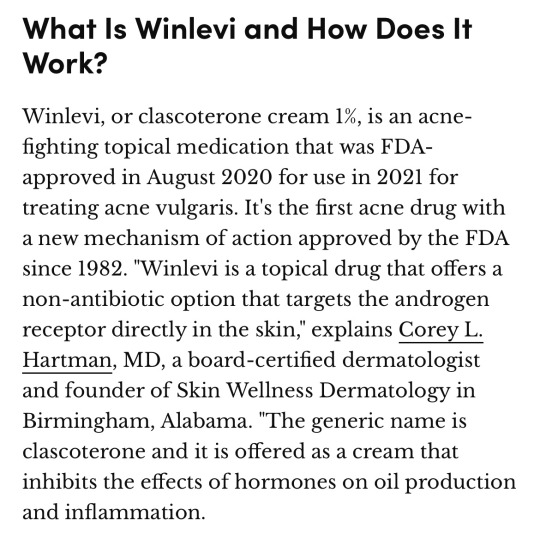
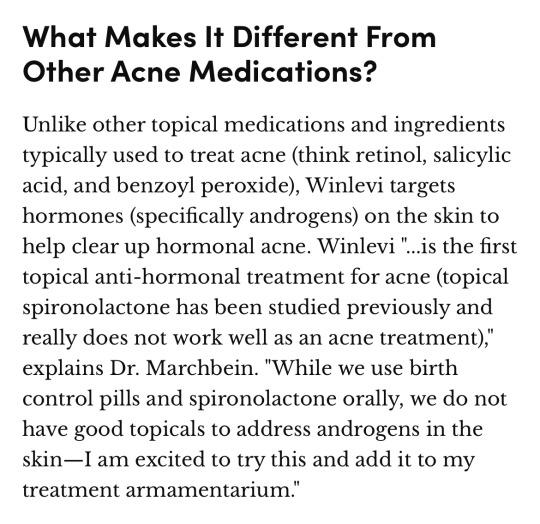
(https://www.realsimple.com/beauty-fashion/skincare/what-is-winlevi)
androgens, specifically DHT (which is derived from testosterone), cause sebaceous glands to produce a shitton of sebum and oil which causes hormonal acne. transgender men on hrt are getting big doses of T to masculinze themselves but at the cost of that extra testosterone in their system being converted to DHT, they get hormonal acne breakouts and may be self-conscious about it.
as i said, hormonal acne doesn’t always respond to antibiotics because the cause is inherently hormonal (spike in sebaceous gland activity). treatments for hormonal acne are birth control pill or spironolactone, the latter of which is counterproductive to the masculinizing aspect of transmascs taking testosterone. (in fact spironolactone is actually often used as part of trans women’s feminizing hormone therapy). but note that both are systemic, they work on the entire body at once.
here’s how clascoterone works:
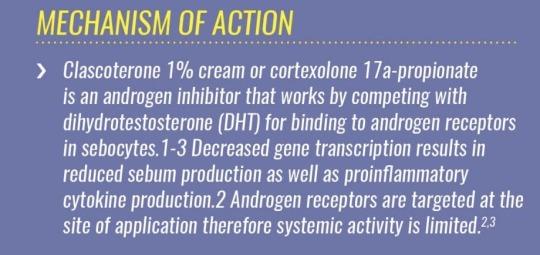
(https://nextstepsinderm.com/derm-topics/clascoterone-cream-therapeutic-cheat-sheet/)
“Clascoterone 1% cream or cortexolone 17a-propionate is an androgen inhibitor that works by competing with dihydrotestosterone (DHT) for binding to androgen receptors in sebocytes. Decreased gene transcription results in reduced sebum production as well as proinflammatory cytokine production. Androgen receptors are targeted at the site of application therefore systemic activity is limited.”
that last sentence is HUGE because that means it’s safe for trans men and won’t affect the masculinizing effects of their body-wide testosterone treatment. it’s topical, it does not go into the bloodstream, it is entirely local and targets the site of application. it just blocks the side effects of DHT in individual sebum cells.
this idea came to me because i was prescribed this by my dermatologist for my own hormonal acne (which it did help clear up on me btw) like a month ago and today i saw my transmasc friend self-conscious about his acne and not wanting to share pics of himself because of it and i was like.. i just had a brain blast. i swear this isn’t me shilling a medication or anything i just get excited about cool technology because many people probably don’t know it exists and it could be really helpful and beneficial for trans mens’ self-confidence with the acne that taking T can cause. if you’re on testosterone and have hormonal acne you should talk to your dermatologist about winlevi :]
oh and the best part is i figured this based on my knowledge of biology (i’ve taken an endocrinology class as well too) and doctors confirmed my speculation that it would be effective for transmascs so YAY YIPPIE:
“This new therapy is especially important for male patients who are undergoing gender-affirming care. The field of dermatology is increasingly being recognized for its critical role in providing nondiscriminatory, gender-affirming care for transgender patients. Nearly 9 out of 10 female-to-male transgender patients (transgender men) will develop acne within 4 to 6 months of testosterone administration. Hormonal acne therapy with spironolactone is not appropriate for transgender men who are on gender-affirming hormonal therapy because it could potentially negate the desired masculinizing effects of testosterone therapy. “Topical clascoterone does not enter into the systemic circulation and is therefore safe for use in men as well. It is also an option for male transgender patients for whom systemic antiandrogens are counterproductive,” Baldwin noted.
(https://www.dermatologytimes.com/view/meeting-the-challenges-of-acne-in-adults)
EDIT: i forgot to add that since winlevi is so new it’s incredibly expensive and insurance may not cover it. BUT there are local specialty/compounding pharmacies that your dermatologist may put it through. my dermatologist put it through westside pharmacy in florida and it took a normally $500 tube down to only $50. in my case i didn’t need to ask about the specialty pharmacy, they just included it when they prescribed it to me in the sample package. the free samples they gave me actually cleared up my hormonal acne before even needing to open up the real prescription i got. those sample tubes are small but i’m still not done with them because the medication is so effective. so imo you’re getting a REALLY good amount that can last a long time for $50 with the full prescription.
242 notes
·
View notes
Text
What skincare to use to help acne <3

First of all, keep in mind that acne is natural. It's nothing we should feel extremely insecure about. Everyone's beautiful in their own way 🙂.
Salicylic acid. Salicylic acid is a beta hydroxy acid. It’s well-known for reducing acne by exfoliating the skin and keeping pores clear. When your pores get plugged with dead skin cells and oil, blackheads, whiteheads or pimples often appear. Salicylic acid penetrates your skin and works to dissolve the dead skin cells clogging your pores. Salicylic acid is consider safe for teens to use as well. If you use this make sure to follow with a very hydrating moisturiser as this acid can leave skin very dry as it removes oil from the skin.
Benzoyl peroxide. Benzoyl peroxide works as an antiseptic to reduce the number of germs and bacteria on the surface of your skin. Like Salicylic acid, it can also lead to dry skin so remember to use a moisturiser afterwards. This is also safe for teens to use.
Niacinamide acid. Niacinamide acid is a form of vitamin B3. Niacinamide is an anti-inflammatory that works to reduce the redness and swelling associated with acne. It also works to regulate the amount of acne-causing oil being produced by the glands in your skin. One cause of acne is to much sebum or oil being produced, so since niacinamide regulates the amount of sebum being produced it helps with acne. This product is also teen safe <3.
Diet. Sometimes your diet can lead to too much sebum production and affect your hormones causing an hormonal imbalance, which can also lead to acne and other skin concerns. Also remember to stay hydrated!
A lot of the time regularly washing your face might be enough. It honestly depends on you age and the amount of acne that you have. If you are considering using any of the product please research them and check with a doctor or dermatologist if you can use them. Remember that if you feel a burning sensation on your face your skin is getting irritated and you should stop using that product.
Lifestyle. How much excerise you do, the amount of stress you have can also impact acne as well.
I hope this helps some of you :D. Bye, and remember to stay postive.
#skincare#self care#glow up#positivity#body posititivity#healthcare#health and wellness#new blog#acne#wellness#self love#skin#teenlife#girlblogging#life hacks
6 notes
·
View notes
Text
*Dr. Smita Goel Homeopathy Clinic*
www.thehomeopathyclinic.co.in
A chalazion is a slowly developing lump that forms due to blockage and swelling of an oil gland in the eyelid. A chalazion is generally not an infection.
A chalazion often starts out as a very small red, tender, swollen area of the eyelid. In a few days, it may change to a painless slow-growing lump the size of a pea.
A chalazion is often confused with a stye (or hordeolum), which is an infection of an oil gland in the eyelid. A stye produces a red, swollen, painful lump on the edge or the inside of the eyelid and usually occurs closer to the surface of the eyelid than chalazia. Left untreated, a stye can result in the formation of a chalazion.
Do not attempt to squeeze or drain the chalazion yourself. You may need treatment for proper healing.
Characteristics of a chalazion:
Painless bump or lump in the upper eyelid or, less frequently, in the lower eyelid
Caused by a thickening of the fluid in the oil glands (meibomian glands) of the eyelid
Tearing and mild irritation may result as the obstructed glands are needed for healthy tears
Blurred vision, if the chalazion is large enough to press against the eyeball
More common in adults than children; most frequently occurs in people aged 30-50
Disappears without treatment within several weeks to a month, although they often recur
Risk factors include:
Acne rosacea
Chronic blepharitis (inflammation of the eyelids, often from excess bacteria)
Seborrhea
Tuberculosis
Viral infection
Rarely, they may be an indication of an infection or skin cancer
How is a chalazion diagnosed?
A chalazion is best diagnosed by your eye doctor, who can advise you on treatment options. Necessary testing might include:
Patient history to determine symptoms and the presence of any general health problems that may be contributing to the eye problem.
External examination of the eye, including lid structure, skin texture and eyelash appearance.
Evaluation of the lid margins, base of the eyelashes and oil gland openings using bright light and magnification
The good news is that many chalazia require minimal medical treatment and clear up on their own in a few weeks to a month.
Apply warm compresses to the eyelid for 10 to 15 minutes 4 to 6 times a day for several days. The warm compresses may help soften the hardened oil that is blocking the ducts and allow drainage and healing.
You can create a warm compress by dipping a clean soft cloth in warm water and then wringing it out (although you may prefer a commercially available reusable heat mask). Remoisten the cloth frequently to keep it wet and warm.
You can also gently massage the external eyelids several minutes each day to help promote drainage. Once the chalazion drains on its own, keep the area clean, and keep your hands away from your eyes.
If the chalazion does not drain and heal within a month, contact your eye doctor. Again, do not attempt to squeeze or "pop" the chalazion, as you may inadvertently do more damage.

#greater noida#best homeo clinic in indirapuram#ghaziabad#homeopathy clinics#homeopathy doctor#homeopathy for ibs#best skin doctor in ghaziabad#homeopathy#homeopathy cold treatment in indirapuram#homeopathy medicine#best homeopathy doctor#best homeopathy clinic in indirapuram#homeopathy skin allergies treatment in indirapuram#homeopathy skin allergies treatment in noida#homeopathy specialist in indirapuram#homeopathy treatment#skin specialist in indirapuram#laser treatment in indirapuram#indirapuram#ghaziabad latest news#ghaziabadnews#ayurvedic doctor in ghaziabad#best schools in ghaziabad#wave city ghaziabad#child specialist in noida#nursery school in greater noida#noida news#child doctor in noida#mayurvihar#delhigram
2 notes
·
View notes
Text
Best Acne Doctor in Yamunanagar
Acne, a common skin condition, affects millions of individuals worldwide. It not only impacts physical appearance but also takes a toll on self-esteem and confidence. In this post, we will discuss causes and symptoms of acne, as well as explore Ayurvedic and Homeopathic treatment options. We are proud to introduce Dr. Garg - Umeedhom (Scientific Clinic), who specializes in providing holistic solutions for managing acne.
Understanding Acne:
Acne is a skin disorder that occurs when hair follicles become clogged with oil, dead skin cells, and bacteria. It predominantly affects areas with a high concentration of oil glands, such as the face, chest, and back. While it is most commonly associated with adolescence, acne can persist into adulthood, causing discomfort and emotional distress.
Causes of Acne:
Several factors contribute to the development of acne:
Excess Sebum Production: Overactive oil glands produce more sebum, which can clog hair follicles and lead to acne.
Clogged Pores: The combination of dead skin cells and excess oil can create blockages in hair follicles, resulting in blackheads, whiteheads, and pimples.
Bacterial Infection: The bacterium Propionibacterium acnes can thrive in clogged hair follicles, causing inflammation and breakouts.
Hormonal Changes: Fluctuations in hormones, particularly during puberty, menstruation, pregnancy, and menopause, can trigger acne.
Diet and Lifestyle: Certain diets high in dairy, refined sugars, and processed foods, as well as high-stress levels, can exacerbate acne.
Symptoms of Acne:
The symptoms of acne can vary in severity:
Blackheads: Small, dark bumps that form when hair follicles become clogged and the top remains open.
Whiteheads: Similar to blackheads, but covered by a thin layer of skin, giving them a white appearance.
Papules: Small, red, raised bumps caused by infected or inflamed hair follicles.
Pustules: Red bumps with white or yellow centers, often referred to as "pimples."
Cysts: Large, painful, pus-filled lumps that form beneath the skin's surface.
Ayurvedic Treatment for Acne:
Ayurveda, an ancient holistic healing system, offers natural approaches to managing acne:
Herbal Cleansing: Cleansing herbs like neem and turmeric help purify the blood and detoxify the body.
Dietary Changes: Avoiding excessive spicy, oily, and junk foods, and incorporating fresh fruits, vegetables, and water can promote clear skin.
Herbal Supplements: Herbal supplements like guggul, amla, and manjistha can balance hormones and promote skin health.
Homeopathic Treatment for Acne:
Homeopathy addresses acne by considering the individual's constitution and symptoms:
Sulphur: Used for acne with intense itching and burning sensations on the skin.
Pulsatilla: Prescribed for acne worsened by rich, fatty foods and hormonal fluctuations.
Hepar Sulph: Suitable for acne that is extremely painful and sensitive to touch.
Meet Dr. Garg - Umeedhom (Scientific Clinic): Best Acne Doctor in Yamunanagar
Dr. Garg is a renowned practitioner at Umeedhom (Scientific Clinic), specializing in holistic approaches to acne management. With years of experience, Dr. Garg offers personalized Ayurvedic and Homeopathic treatments to address the root causes of acne and promote clear, healthy skin.
Conclusion:
Acne is a common skin condition with various underlying causes. While it can impact self-confidence, effective treatment options are available. Dr. Garg Your Skincare Expert (Scientific Clinic) offers personalized Ayurvedic and Homeopathic solutions that address acne's root causes, providing hope for those seeking clear and radiant skin. Remember, achieving healthy skin requires patience and consistency in following the recommended treatments.
#Best Acne Doctor in Yamunanagar#best ayurvedic doctor in yamunanagar#ayurvedic doctor near me#ayurvedicmedicine#ayurvedictreatment#bollywoodedit#skin care#ayurveda#ayurvedicherbs#sureshotherbals#Homeopathic Treatment for Acne#Ayurvedic Treatment for Acne
2 notes
·
View notes
Text
Skin With Rosacea: Solid Tips to Improve Your Skin
Disclosure
Some of the links on this site are affiliate links, including links in images. This means that if you click on such a link and purchase something, I will receive an affiliate commission at no extra cost to you. I need income to continue bringing you useful content and I've got to eat, right?
Do You Have Skin With Rosacea?

Acne Rosacea
Skin with Rosacea presents itself with redness on your skin, visible blood vessels, bumps (they can be solid bumps or pus-filled pimples), and pimples that primarily affect the center of your face.
Around 16 million Americans suffer from Rosacea, making it a widespread condition, yet the exact cause is unknown. Read on to learn what triggers rosacea flare-ups, symptoms to look out for, and proven treatment options to reduce facial redness and irritation from this troublesome skin disorder.

Skinception's Soothing Rosacea Serum
What is Rosacea and What Causes It?
Rosacea is a common inflammatory skin condition that results in pronounced facial redness and bumps that resemble acne. It typically begins between ages 30-50 and tends to affect those with fair skin. While the cause is unknown, rosacea often runs in families and has been linked to immune system dysfunction, microscopic mites living on the skin, and blood vessel abnormalities.
The condition develops in phases, beginning with flushing and visible blood vessels on the nose and cheeks. Without treatment, facial redness becomes more persistent, the skin may thicken and enlarge, and bumps and pimples appear. In severe cases, the nose may become swollen and enlarged from excess tissue. Ocular rosacea can cause red, irritated eyes.
What Triggers Rosacea Flare-Ups?
Many factors can trigger rosacea flare-ups and worsen symptoms. Common rosacea triggers include:
- Sun exposure
- Hot weather or overheating
- Spicy foods
- Alcohol
- Emotional stress
- Hot beverages
- Certain skin care products
- Strenuous exercise
Avoiding personal triggers is key to preventing flare-ups and keeping rosacea under control. Keeping a rosacea diary can help identify your unique triggers.

Skinception Soothing Rosacea Serum - Order Now
Recognizing the Symptoms of Rosacea

Rosacea
Rosacea has several distinct signs and symptoms to look out for:
- Flushing or frequent blushing
- Persistent redness on the nose, chin, cheeks, and forehead
- Small blood vessels visible on the face
- Acne-like bumps or pimples on the cheeks, nose, and forehead
- Watery, irritated eyes (ocular rosacea)
- Thickening or enlarged nose tissue (advanced rosacea)
- Burning or stinging facial skin
The presence of one or more of these symptoms may signal rosacea, especially if the redness lasts longer than 10 minutes. See a dermatologist for an evaluation.
Ocular Rosacea
A subtype of rosacea known as ocular rosacea causes irritation and inflammation of the eyes. About 50% of people with rosacea also experience ocular (of or connected with the eyes or vision) symptoms.
Signs and symptoms may include redness, burning, itching, excessive tearing, blurred vision, light sensitivity, and sensation of a foreign object in the eye. This condition results from inflammation of the oil glands around the eyelids. Left untreated, it may cause eye dryness, recurrent styes, swollen eyelids, and potential vision loss from corneal damage. Using preservative-free artificial tears, warm compresses, and ophthalmic medications can help control symptoms.
It is important that you see an ophthalmologist at the first signs of eye irritation, as prompt treatment is key to preventing permanent eye problems. Maintaining eyelid hygiene and following a rosacea skin care regimen may also provide relief.
Rosacea Treatment
Since there is no single test for rosacea, diagnosis involves assessing symptoms and ruling out similar conditions like acne, allergies, and eczema. Once diagnosed, treatment focuses on managing symptoms and preventing progression.
Self-help measures include avoiding triggers, using only gentle skin care products, and diligent sun protection with SPF 30 or higher. Green-tinted makeup and creams can neutralize facial redness.
If self-care isn't enough, medications or laser therapy may be prescribed. Common rosacea treatments include:
- Topical antibiotics to reduce inflammation
- Low-dose oral antibiotics
- Topical brimonidine to constrict blood vessels
- Intense pulsed light therapy to diminish small blood vessels
- Isotretinoin for severe, cystic rosacea
With professional treatment and lifestyle adjustments, most people can achieve control over rosacea symptoms and keep flare-ups to a minimum. Though incurable, rosacea can often be effectively managed with the right care plan.
10 Tips for Skin Care and Reducing Rosacea Flare-Ups
Implementing a combination of self-help measures and medical treatment can help those with rosacea lead normal, fulfilling lives virtually free of flare-ups. Here are 10 tips:
- Identify and avoid your personal rosacea triggers
- Apply broad-spectrum, mineral sunscreen daily with SPF 30+
- Protect your face with wide-brimmed hats outdoors
- Choose gentle skin cleansers labeled “non-irritating”
- Handle skin gently, avoiding scrubbing or harsh products
- Apply moisturizers and cosmetics designed for sensitive skin
- Reduce skin irritants like alcohol, spices, heat, and extreme temperatures
- Drink plenty of water and eat a healthy, balanced diet
- Manage emotional stress through self-care practices like yoga
- See a dermatologist to create a customized treatment plan
Controlling rosacea takes patience and perseverance, but significant improvement is possible. Pay close attention to your unique symptoms and triggers, and be proactive with self-care and medical treatment. With the right approach, it is possible to minimize rosacea's visible signs and live life normally.

Skinception's Soothing Rosacea Serum
National Rosacea Society Survey - Insurance Cover for Rosacea Patients
The survey was conducted by the National Rosacea Society and published on July 25, 2023. The findings show that while most patients have insurance coverage for prescription rosacea medications, few have coverage for laser treatments, resulting in many patients paying high out-of-pocket costs or delaying treatment.
Here is a summary of the key findings from the survey:
Survey FindingPercentageHave health insurance97%Insurance covers some or all prescription rosacea medication71%Insurance covers laser/light therapy3layed treatment due to lack of insurance or high copays52%Paid out-of-pocket for rosacea treatment66%Out-of-pocket $100013%Results from a survey of 560 rosacea patients.
Skin With Rosacea: Frequently Asked Questions
What is rosacea?
Rosacea is a common skin condition that causes redness on the facial skin. It is characterized by visible blood vessels, bumps, and pimples on the affected areas.
What are the symptoms of rosacea?
The symptoms of rosacea include redness on your face, visible blood vessels, bumps and pimples, and eye symptoms such as redness and irritation.
What causes rosacea?
The cause of rosacea is unknown, but it is believed to be a combination of genetic and environmental factors. Certain triggers, such as sunlight, stress, and certain foods, can aggravate the condition.
Who is at risk for rosacea?
People with fair skin, a family history of rosacea, and a history of sunburns are more likely to develop rosacea. It is more common in women and individuals between the ages of 30 and 50.
Is there a cure for rosacea?
Currently, there is no known cure for rosacea. However, there are various treatment options available to manage the symptoms and reduce the frequency of flare-ups.
What are the treatment options for rosacea?
Rosacea treatment may involve topical and oral medications, laser therapy, and lifestyle changes. It is important to consult with a dermatologist for a personalized treatment plan.
Can rosacea come and go?
Yes, rosacea symptoms can come and go. Some individuals experience periods of remission where they have few or no symptoms, while others may have persistent symptoms.
Does rosacea resemble acne?
Yes, rosacea can resemble acne in some cases. However, unlike acne, rosacea does not cause blackheads or whiteheads. It is important to differentiate between the two and seek appropriate treatment.
How can I protect my skin if I have rosacea?
To protect your skin if you have rosacea, it is essential to use gentle skincare products, avoid triggers such as sunlight and hot temperatures, and apply sunscreen with a high SPF. Additionally, maintaining a consistent skincare routine can help keep your skin healthy.
What are the types of rosacea?
There are several types of rosacea, including erythematotelangiectatic rosacea, papulopustular rosacea, phymatous rosacea, and ocular rosacea.
Erythematotelangiectatic Rosacea
This causes persistent redness, flushing, and visible blood vessels in the skin.
Papulopustular Rosacea
This results in breakouts similar to acne with red bumps on your face and pus-filled pimples.
Phymatous Rosacea
This leads to thickening skin and enlargement of the nose.
Ocular rosacea
This causes red, irritated, and dry eyes.
Many people have overlapping symptoms of different rosacea subtypes. Identifying your subtype can help guide treatment to target your particular manifestations.
Links
Natural Wellness Solutions
Best Essential Oil for Skin
Best Essential Oils for Skin

© Natural Wellness Solutions
Read the full article
2 notes
·
View notes
Text
Accure Laser for Acne

The Accure Laser System is the next-generation light-based platform for the treatment of acne. Now you can get this latest treatment at Dr.Shelton’s practice (Laser Skin Surgery Center in NY)
The Accure laser works by targeting overactive sebaceous glands that sit beneath the skin. By targeting these glands, the laser reduces the amount of oil or sebum they produce. With less oil production, there is less available to clog pores and cause acne breakouts. The treatment targets acne right where it starts.
Learn more about this new treatment at: https://www.thenyac.com/accure-laser-treatment-for-acne-nyc/
2 notes
·
View notes
Text
Pregnancy-friendly skin care
During pregnancy, a woman expects many surprises. And it's not just about a growing belly and unexpected food addictions. The body and skin of the mother-to-be literally change before our eyes. The skin frequently becomes more sensitive, and age spots and rashes appear.
Skin changes during pregnancy
According to a clinical study of skin changes in low and high-risk pregnant women, approximately 89% of pregnant women experienced skin changes. This rate proves that skin changes during pregnancy are not uncommon. Even if you do not experience any changes during pregnancy, your skin may change after delivery.
Dryness of the skin
During pregnancy, the mother's blood volume increases up to 1.5 times. In addition, during pregnancy, much of the water drunk by the pregnant woman is used to maintain the volume of the amniotic fluid. And after giving birth, a significant amount of the body's water is used in breast milk. Both of these reasons contribute to dry skin during pregnancy.
Roughness and sensitivity of the skin
During pregnancy, the body's resistance weakens, and the woman becomes more susceptible to infections. One theory is that this is a reaction to avoid the baby being perceived as a foreign substance. The same is true for the skin, which becomes very sensitive to external stimuli.
Susceptibility to dyes
The female hormones that increase during pregnancy have the function of activating the action of melanocytes that produce melanin. As a result, spots and freckles on the face are visible, and pigmentation of the sides, crotch, and joints is likely to occur.
Ease of acne onset.
Hormonal changes can be a major cause, but surprisingly, "dryness" can also be a factor. If your skin is dry, excess oil may be secreted to make up for what you lack. Therefore, neglecting moisturizing simply for fear of acne and sticky skin is a mistake.
Overall, the most common changes are dryness and tightness. These are most often associated with excess female sex hormones and usually disappear after pregnancy. However, a new skin type requires new care ! Therefore, at the first signs of unpleasant changes, it is worthwhile to stop using cosmetic products for a while and observe the skin.
When choosing skin care products for the face and body, it is important that the woman takes into account her new condition, because during pregnancy the body becomes more sensitive. It is worth choosing special cosmetic products for pregnant women: they are hypoallergenic, do not contain harmful ingredients, and are safe for the pregnant woman and the baby. The same applies to the choice of salon procedures: they should be selected taking into account the "special position" of the woman.
Facial care during pregnancy
To care for dry skin, the gentlest products that nourish and moisturize well are suitable. Creams and emulsions should contain vitamins A and C, as well as saturated fatty acids. It is best to stop with salon peels for a while: replace this procedure with massages and cleansing masks.
Oily facial skin during pregnancy needs to regulate the work of the sebaceous glands. This task is well fulfilled by the antioxidants contained in the creams: vitamins A and C, green tea or grape seed extracts. Oily skin also needs to be moisturized: as it loses its moisture, it absorbs the fats released with all the impurities accumulated on the surface. It is therefore useful to abandon the drying of toners containing alcohol and replace them with slightly acidic toners (pH not lower than 5). For cleansing, gentle scrubs and masks that you can make yourself (for example, the oatmeal and plain yogurt mask) are suitable.
Combination skin can be of two types: oily and dry. The latter is particularly prone to rapid aging, which is why products with protective and regenerating components, like avocado oil or wheat germ oil, are best for it. For combination skin with an oily tendency, deep cleansing is important; gentle scrubs are useful here; they should not be used more than once or twice a week. In the salon, you can opt for a course of fruit acid peels, which not only cleanse, but also tighten pores, helping to fight blemishes.
Body care during pregnancy
Mothers-to-be are often concerned about flaking, itching, tightness, and stretch marks.
Stretch marks are nothing more than microtrauma on the surface of the epidermis. The purple, pink, or white "cracks" are due to the connective tissue that fills the empty spaces. The main causes of stretch marks are hormonal disorders associated with a decrease in the production of elastin and collagen. The skin becomes dry, and instead of stretching, it tears. To avoid this, it is important to nourish and moisturize the skin intensely, not only from the outside but also from the inside. To prevent stretch marks during pregnancy, it is recommended to drink about 2 liters of water a day (to avoid swelling, drink most of the liquid in the morning).
Moisturize and nourish the skin well using avocado fruit extracts, shea butter, almond and coconut oils. And for the comfort of the legs, which are under enormous stress during this period, you can choose menthol or centella treatments.
If the condition of the skin is very worrying for the mother-to-be (significant rashes, acne, and other obvious changes have appeared), it is best to contact specialists; first of all, a dermatologist and an allergist. They will help identify the cause of the alarming symptoms and choose the optimal and safest treatment.
You can learn more about this topic by clicking on this link.
#skincare#moisturizer#organic#skin care products#skincareproducts#skincaretips#sunscreen#acne#skincarelover#beautytips#antiaging#beauty products#skincream#skin protection#makeup#anti ageing tips#skincareaddict#skin care#skin health#skin tips#skin treatment#skin disorders#skin problems#healthy#healthy lifestyle#nutrition#beauty#pregnancy#pregnant
18 notes
·
View notes
Video
youtube
10 Amazing Home Remedies for Acne and Pimples
Acne or pimples are one of the most common skin conditions that occurs when hair follicles are clogged with oil and dead skin cells. Each hair follicle is connected to a sebaceous gland (oil glands), which produces an oily substance called sebum. Sebum can plug up hair follicles, causing the growth of a bacteria known as Propionibacterium acnes, which is normally present on the skin.
Acne can cause painful and generally occur on areas of the skin with a relatively high number of oil glands, including face, neck, back, shoulders, upper part of the chest and even arms.
If left untreated, acne can lead to long-term hyperpigmentation or scarring. There are many products on the market to treat acne but they can take time.
Here are 10 amazing home remedies for acne and pimples that you might want to try.
1. Apple Cider Vinegar
Apple cider vinegar contains several organic acids that have been shown to fight many types of bacteria and viruses.
Apple cider vinegar can help to dry up the excess oil, reduces red marks and suppress inflammation.
Mix 1 part apple cider vinegar to 3 parts water and apply on the affected skin area with a cotton ball. Leave it on for a few minutes and rinsing with cool water. Repeat this process a few times daily.
2. Honey
Honey has antibiotic properties, which help to improve acne. Apply 1 teaspoon of honey on the affected skin areas and leaving it on for 30 minutes.
3. Tea Tree Oil
Tea tree oil has the ability to fight bacteria and reduce skin inflammation. Mix 1 part tea tree oil to 9 parts water and apply on the affected skin area with a cotton swab.
4. Ice
Ice can reduce swelling, inflammation and redness of acne. Wrapping an ice cube in a paper towel and apply on the acne for a few seconds.
5. Toothpaste
Toothpaste has antibacterial properties, which play a vital role in eliminating the bacteria that cause acne. Apply a layer of white toothpaste on the acne and leave it on overnight.
6. Baking Soda
Baking soda dries out the acne and also exfoliate the skin to remove excess oil.
Mix 1 teaspoon of baking soda with a few drops of water to form a paste. Apply the paste on the acne and let it to dry for a few minutes, then rinsing with warm water. Do this a few times a day.
7. Witch Hazel
Witch hazel has anti-inflammatory and antibacterial properties.
Applying witch hazel to the skin can reduce inflammation and fight bacteria.
Soak 1 tablespoon witch hazel bark and 1 cup water for 30 minutes, then boil the mixture for 10 minutes and let it cool. Apply the mixture on the affected skin area with a cotton ball 1 to 2 times per day.
8. Green Tea
Flavonoids and tannins in green tea are known to fight inflammation and kill bacteria. Steep green tea in boiling water for about 3 to 4 minutes and let it cool. Apply the tea on the acne with a cotton ball. Leave it on for a few minutes, then rinsing with cool water and pat dry.
9. Aloe Vera
The anti-inflammatory and antibacterial properties in aloe vera can help to reduce redness and skin irritation. Apply a layer of aloe vera gel on the affected skin area and leave it on for about 10 to 15 minutes.
10. Aspirin
Aspirin can dry up acne and reduce the swelling due to accumulated pus. Form a paste by crushing the aspirin tablet and mix with a few drops of water. Apply the paste on the acne and let it dry.
Final Thoughts
These home remedies may not work for everyone, but they just might be worth a try.
After you have gotten rid of acne, it’s important to make changes in your skin care routine to prevent breakouts from returning.
#youtube#acne#pimples#pimple#acnetreatment#acnescars#acneremoval#acneproneskin#acnescarshomeremedies#skincare#skin#skincareroutine#skincaretips#skins#homeremedies#homeremedy
3 notes
·
View notes
Text
How to get rid of acne?
Introduction
Acne is a common skin condition that causes pimples and blemishes. If you have acne, it can be hard to get rid of. Luckily, there are plenty of ways to help treat your acne without resorting to harsh chemicals or treatments that might cause other side effects. Nowadays various anti-acne kits are available in the market. Here's how:
Cleanse twice a day
The first step to getting rid of acne is cleansing your face twice a day. Use a mild cleanser and follow these tips:
Choose a non-harsh cleanser that contains salicylic acid or benzoyl peroxide.
Make sure you wash your face thoroughly with lukewarm water, then dry off completely before applying moisturizer or makeup on top of it. This can prevent breakouts from happening when you reapply products later on down the road!
Exfoliate once a week to unclog pores
Exfoliating is an essential step in clearing your skin. You can use a scrub with salicylic acid or glycolic acid to help clear up acne, as well as microbeads, sea salt, and sugar. Jojoba beads are also great for exfoliation because they contain anti-aging properties that moisturize your skin as well as unclog pores.
Wear sunscreen every day
Sunscreen is a must for anyone who wants to get rid of acne, but it's especially important if you have oily skin or are prone to breakouts. The best way to keep your face clear of scars is by applying an SPF 30+ broad-spectrum sunscreen with an anti-aging formula every morning before leaving the house—and then reapplying throughout the day if necessary! Don't forget: You should also protect your ears, neck, and hands as well (just like normal!).
Use products with salicylic acid or benzoyl peroxide
Salicylic acid and benzoyl peroxide are both beta hydroxy acids, which means they can help reduce the production of oil and inflammation on your skin. In addition to this, salicylic acid is also an antibacterial agent that kills bacteria that cause acne.
Both these products are available over-the-counter in many drugstores and supermarkets in different forms such as creams or lotions. However, it's important to note that you shouldn't apply them directly on your face since they may cause skin irritation as well as sun sensitivity (not cool). Try using them at night time before going out looking fresh! Always use the best acne scar removals products for treating acne and natural products give effective results within less time.
Don't sleep in your makeup.
If you have acne-prone skin, it's a good idea to avoid sleeping with all of your makeup on at once. You may be tempted to do so because it feels nice and clean, but if you don't use a good night moisturizer, the oils can clog up pores and irritate your face even more. Also: don't go out without washing your face first!
Use oil-free makeup and skin care products
You can use oil-free makeup and skin care products to help you get rid of acne. Oil may clog pores, causing them to become infected. This will make your acne worse because bacteria are more likely to grow in clogged pores.
Oil also causes breakouts by making the skin's surface look uneven, which triggers oil glands on the skin's surface that then produce more sebum (the natural oil found in human hair follicles). This extra sebum may flow out onto the face, causing pimples or blackheads.
Cleansing is the most important thing you can do to combat acne.
Cleansing is the most important thing you can do to combat acne. When you cleanse, it removes excess oil and dirt that can clog pores and cause breakouts. But don't worry: there are no harsh chemicals in cleansers like benzoyl peroxide or salicylic acid—they're just made to soothe sensitive skin.
Cleansing twice a day is crucial for fighting blemishes; make sure to wash your face in the morning (unless you have oily skin) and at night before bedtime.
Conclusion
We hope that you found this article helpful. Acne can be a very serious condition, but you can take steps to get rid of it by cleansing and exfoliating regularly, applying salicylic acid or benzoyl peroxide products twice a day, wearing sunblock every day, and using oil-free makeup.
3 notes
·
View notes
Text
Home Remedies For Skin

Even if there are so many skincare and cosmetic goods on the market, home cures are always in style. We offer a great deal. You name it, there is a home cure for it: for dry skin, oily skin, to achieve clear, glowing skin, to get rid of pimples and rashes. We have a wide variety of natural ingredients that work wonders for our skin, such orange zest, cinnamon, and turmeric, that can be found right there in our kitchen cupboards and have been passed down through generations. So, let’s look at some at-home skin treatments you can attempt.
Natural Treatments For Oily Skin
Sebum, a fatty, waxy substance produced by the sebaceous glands found beneath the skin’s surface, is overproduced and leads to oily skin. Sebum moisturizes the skin, so it’s not always a bad thing, but too much of it can clog your pores and result in acne. Home remedies might be your go-to tricks if you’re seeking for ways to control it but don’t want to spend a lot of money on pricey products. Here are five natural treatments for oily skin:
Honey
This common culinary item works wonders for the skin. It has natural antibacterial and antiseptic properties as well as being a humectant, which means that it draws out oil from the skin while retaining moisture. Here’s how to put it to use:
· Raw honey is what you require.
· To your skin, apply a thin layer of it.
· Give it 10 to 15 minutes to dry.
· After that, wash it with water.
Multani Mitti (Earth of Fuller) Multani mitti is a mainstay of the natural skincare regimen in India. Since it both nourishes the skin and eliminates excess oil, it is very advantageous for oily skin.
· Take some of it and put it in a dish to make a multani mitti pack. It is easily available in the market in powdered form.
· To make a paste, mix in some rosewater.
· Apply it to your face and neck, then wait a few minutes for it to dry.
· After it has dried, wash it with water.
Aloe Vera
· This is yet another all-natural element that is frequently used to maintain healthy skin, including the control of excess oil.
· You should apply some Aloe Vera gel to your skin and wait a while. It may also be used overnight.
· Use water to clean it, then pat it dry.
· Aloe Vera might trigger an allergic reaction in people with sensitive skin, it should be mentioned. It is always to first try it in a small area.
Tomatoes
· Tomatoes contain salicylic acid, which is used to treat acne and is a fantastic natural cleaner. Additionally, it aids in removing the skin’s extra oil.
· Juice from tomatoes, please. Cut a tomato in half to prepare it. Pick one half, crush it, and strain the juice.
· Put some on your neck and face.
· For 10 to 15 minutes, leave it.
· Use water to wash it, then pat it dry.
Coffee
· Who knew that drinking coffee, which awakens and alerts you, might help your skin get rid of extra oil?
· Add some honey and coffee powder together.
· Gently massage your face and neck after applying this scrub.
· Following that, rinse it with warm water and pat it dry.
Best Home Remedies Book
Natural Treatments For Dry Skin
The primary cause of dry skin is the climate, namely when there is little moisture in the air. Other contributing variables include using a harsh cleaner, taking a hot shower, or having a skin problem. If you don’t have a major medical condition, you can treat dry skin at home using the following methods:
Coconut Oil
Coconut moisturizes and smoothens the skin, making it good for dry skin. Simply use coconut oil after taking a bath or whenever your skin feels dry. Additionally, you don’t need to modify it in any way.
Olive Oil
· Olive oil is another excellent choice for dry skin.
· To make a scrub, combine sugar and olive oil.
· Apply it and gently massage it into your face and neck.
· Use water to wash it off.
Petroleum glycerin
In the winter, this is commonly utilized. It moisturizes the skin from the inside out as well as on the surface. Applying petroleum jelly to the dry skin or dry spots is what you need to do.
Oatmeal
This traditional breakfast food is effective in curing dry skin. Oatmeal and honey can be used to provide an exfoliant:
· Add some honey to some porridge. If you want to thin out the consistency, you can also add extra water.
· Apply it to your face and neck and gently massage.
· Use water to wash it off.
Natural Treatments For Clear Skin
Although both oily and dry skin can have their share of challenges, combination skin is not immune to these concerns. Our skin is exposed to heat and pollution throughout the day. A bad diet also has an impact. Our skin becomes drab and pallid when the pores fill with debris. Who doesn’t want skin that is clear? Here are some natural cures that could be useful:
Papaya
This tropical fruit eliminates dead skin cells when applied on the skin and has antibacterial characteristics. Here’s how to put it to use:
· Mash one-half of a ripe papaya.
· Make a paste out of it by mixing in some honey.
· Apply it to your neck and face, then wait 10 to 15 minutes.
· Use water to wash it, then pat it dry.
Turmeric
The benefits of turmeric for the skin are well known to all of us. Because of this, Indian ladies and grooms use it prior to marriage to enhance their attractiveness. It aids in reducing skin pigmentation, acne, and other skin-related problems.
Neem
This evergreen tropical plant is renowned for having antiviral and antibacterial effects. It is especially helpful for skin that is oily and prone to acne. To apply it:
· Make a paste by combining yogurt with half a teaspoon of neem powder.
· Apply it on your face, then wait a while.
· Use water to wash it off.
Best Doctor For Your Home
Home Remedies For Acne
Probably the most frequent skincare issue is acne. Many people receive medical care for it. However, if you want to look into some natural and DIY methods, here are some acne home remedies:
Cinnamon with honey
Both cinnamon and honey have antibacterial qualities and aid in reducing inflammation, both of which contribute to acne. This makes them a great combination to combat this widespread skincare problem.
· To make a paste, combine two teaspoons of honey with some cinnamon.
· Apply it to your skin and let it sit for ten to fifteen minutes.
· After that, wash it with water.
Leaf tea
· We are all aware of green tea’s positive health effects. Many people think that using it on the skin will fight acne.
· When the water is boiling, add some green tea and let it cool.
· Use a cotton ball to clean your face.
· After letting it dry, clean it with water.
Aloe Vera
Many skincare treatments employ this tropical herb. Although it is typically used to treat inflammation, rashes, and wounds, it is also used to treat acne.
· Aloe Vera gel should be applied to the face and left on for a while.
· Clean it with water.
Foods For Skin Health
You can use these home treatments to combat certain problems, but your skin also requires hydration from within. You must eat meals that nourish it and keep it in good health. The following items should be a part of your diet if you want to have good skin:
· Tomatoes
· Broccoli
· Carrot
· Spinach
· Peas
· Avocado
· Kiwi
· Berries
· Grapes
· Beans
· Lentils
· Nuts
· Dark chocolate
· Yogurt
· Green tea
· Water
Add these foods to your diet for skin that is healthy. Do not forget that a balanced diet is essential for a healthy body and skin, and that in order to look beautiful on the outside, you must be healthy on the inside.
Common Skin Conditions
Despite the fact that some skin-related conditions can be addressed at home. And you may improve the health of your skin by consuming certain meals. However, some skin conditions may need that you visit a doctor.
· Acne
· Blister
· Hives
· Wart
· Dermatitis
· Eczema
· Melanoma
· Melasma
· Moles
· Lupus
· Ringworm
· Rosacea
· Psoriasis
Even while there are skin cures for acne, you should always contact a doctor if the problem doesn’t go away. The other skin conditions described above are significant ones, and you should consult a dermatologist very away.
If you want to give your skin a break from chemical products and are looking for natural solutions, home remedies are fantastic. Additionally, they are inexpensive, simple to use, and their materials are easily found in the market. You should, however, make sure that you aren’t allergic to any of the ingredients before attempting these. Using them on a smaller region first, then applying them to your face and neck, is an excellent strategy. Once you are certain, you can start to enjoy the wonderful effects of these treatments.
Home remedies hand book
Ultimate survival food
2 notes
·
View notes
Text
Although you would believe it, the toilet seat is not the object in your house with the most germs. In reality, the towels you use to wipe your face are the ones that are the most contaminated, therefore you may be harming your skin by doing so. And although it may seem sensible to dry your face with a towel, doing so might really be more harmful than helpful.
After doing this study, healthhealth is seriously contemplating doing away with the towels. Don't forget to look at the extra we have provided for you at the conclusion of the post if you're unsure of what to use in its place.
1.It could cause acne.
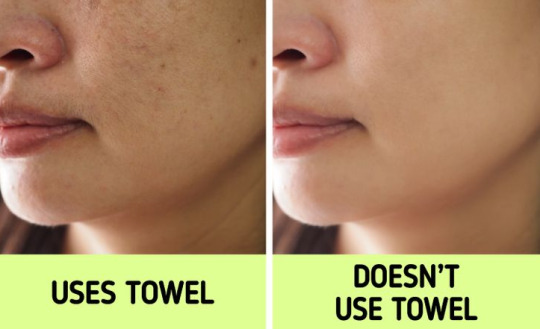
Using the same towel to dry your face and body may be more detrimental to your skin than you realize. Because we often keep towels in bathrooms with wet air, which is a wonderful setting for bacteria growth, towels make excellent bacteria traps. All of these germs are transferred to your skin when you brush the towel against your face, which might ultimately result in breakouts and blocked pores. Even if you use a different towel to dry your face from the one you use to dry your body, you probably aren't cleaning it every day, which means that unwelcome germs may still get on your skin.
2.Your skin could age faster.

When used on your face, terry cloth bath towels are overly rough and may cause little skin rips that leave you more prone to infections and wrinkles. The fabric of the towels becomes brittle the more you wash them, and the friction they produce serves as an exfoliation that may be too harsh for your skin.
3.It makes skincare products less effective.
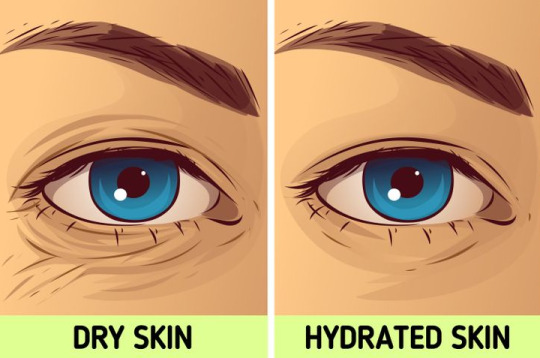
Although it may feel natural to dry your face after washing it, doing so can prevent your skin from benefiting fully from the items you're using on it. Prior to the skin's surface water completely evaporating, your moisturizer will better absorb into the skin. By avoiding towel drying, your skincare products will be able to seal in the moisture your skin needs to appear radiant and young.
4.Your skin may get irritated.
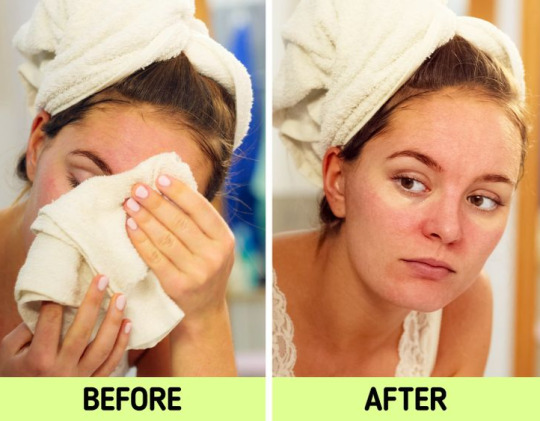
Using towels to dry your face isn't the ideal choice if you have sensitive skin. Wiping your face with most towel materials may cause skin irritation and redness because they might be excessively rough on the skin.
5.It could result in greasy skin.
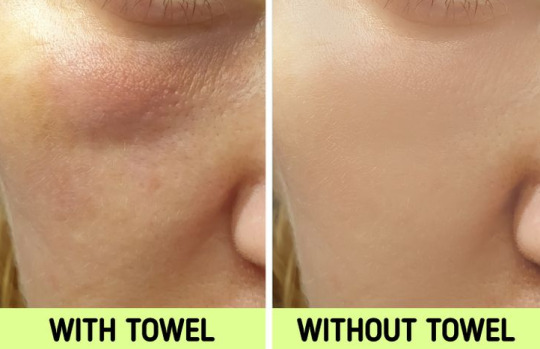
Although it may seem counterintuitive, drying your skin can actually make it greasier. Sebaceous glands under the skin's surface will have to create extra oil to balance out the dryness since rough towels may take away natural oils your skin needs to keep healthy, which can result in excessively oily skin.
Bonus: Face-drying techniques without a towel
Allow the air to do its work rather than using a towel to pat your face dry. Although it takes more time than just wiping your face with a towel, air-drying is more sanitary and kind to your skin. Your skin will appreciate it.
As normal, wash your face.
Allow the skin to dry naturally.
Use your preferred moisturizer.
Do you wipe your face with your bath towel? Can you come up with any other options than using a towel to dry your skin?
More content from beauty
What Could Occur If You Stop Eating Salt to Your Skin
7 Indian Hair Care Secrets to Get Shiny, Thick Hair
6 Natural Ways to Regrow Hair and Prevent Hair Loss
6 Ways to Permanently Remove Ingrown Hairs
8 Exercises That Can Reduce Wrinkles and Make You Look Younger
2 notes
·
View notes
Text
15 home remedies for acne
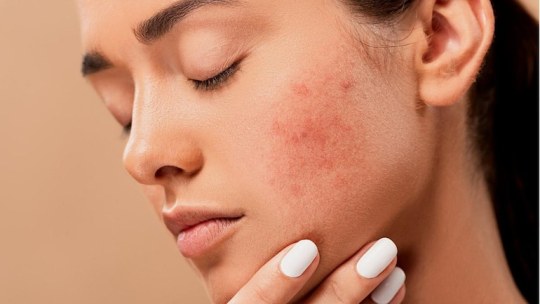
Acne is a hypersensitive reaction of the sebaceous glands of the pores and skin. Hormones, micro organism, and infection can cause zits lesions performing at the pores and skin.
Causes of zits also can include:
Some of the maximum famous domestic treatments for zits contain herbal natural extracts, a lot of which conventional medication practitioners can also additionally use.
Below, we talk the high-satisfactory domestic treatments for zits, what the studies says, and way of life modifications that may assist.
If an character is inquisitive about attempting positive topical treatments, it is a great concept to speak with a dermatologist earlier than making use of the topical treatment without delay to the pores and skin, or do a patch take a look at first, which includes placing a small quantity of the topical remedy at the wrist or hand to check for pores and skin reactions.
BEST HOME REMEDIES HANDBOOK
1. Tea tree oil
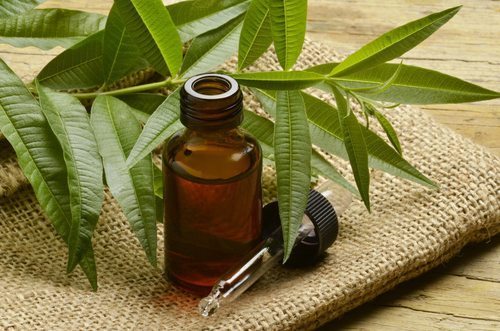
Tea tree oil is a herbal antibacterial and anti inflammatory, because of this that that it would kill P. acnes, the micro organism that reasons zits. Tea tree oil’s anti inflammatory houses suggest that it could additionally assist lessen the swelling and redness of zits.
A 2019 evaluation take a look at checked out the prevailing proof for tea tree oil and zits. The researchers located that tea tree oil merchandise can lessen the quantity of zits sores in humans due to tea trees’ antimicrobial capabilities. This identical evaluation additionally mentioned studies displaying the entire quantity of zits lesions of take a look at contributors changed into decreased from 23.7 to 10.7 after eight weeks of the use of tea tree oil facial merchandise.
— How to apply tea tree oil
People can follow tea tree extract to their zits in lotions, gels, or critical oils. However, a 2016 evaluation article factors out that tea tree oil can purpose hypersensitive reactions in a few individuals, and shows humans use tea tree oil merchandise beneathneath 5% attention to keep away from pores and skin irritation.
Although studies shows that critical oils can also additionally have a few fitness benefits, it’s miles essential to don’t forget that the Food and Drug Administration (FDA) does now no longer reveal or adjust the purity or first-class of these. A man or woman need to speak with a healthcare expert earlier than the use of critical oils, and that they need to make sure to analyze the first-class of a brand’s merchandise. A man or woman need to continually do a patch take a look at earlier than attempting a brand new critical oil.
SUPER FOODS FOR SKIN
2. Jojoba oil
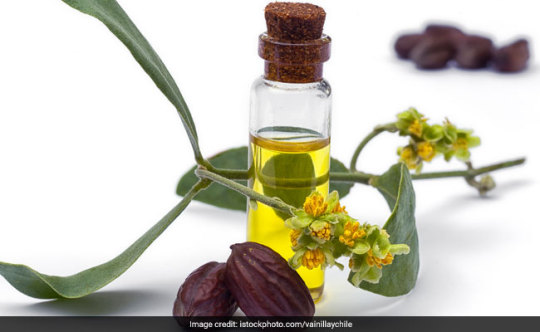
Jojoba oil is a herbal, waxy substance extracted from the seeds of the jojoba shrub. The waxy materials in jojoba oil can also additionally assist restore broken pores and skin, which may additionally assist accelerate wound restoration, which include zits lesions.
Some of the compounds in jojoba oil may assist lessen pores and skin infection, which can also additionally lessen redness and swell round zits, whiteheads, and different infected lesions.
In a 2012 take a look at, researchers gave 133 humans clay face mask that contained jojoba oil. After 6 weeks of the use of the mask to 3 instances in line with week, humans suggested a 54% development in zits.
— How to apply jojoba oil
Try blending jojoba critical oil with a gel, cream, or clay face masks and use it on zits. Otherwise, vicinity some drops of jojoba oil on a cotton pad and rub this lightly over zits sores.
3. Aloe vera

Aloe vera is a herbal antibacterial and anti inflammatory, which means it can lessen the arrival of zits and save you zits breakouts.
Aloe vera incorporates sugar molecules, amino acids, and zinc, making it an brilliant pores and skin moisturizer and protectant. It is particularly appropriate for folks that get dry pores and skin from different anti-zits merchandise.
In a 2021 take a look at, researchers decided that the quantity of bumps, lesions, and dry pores and skin diminished whilst the use of aloe vera mixed with ultrasound and tender masks applications.
— How to apply aloe vera gel
An character need to easy zits sores after which follow a skinny layer of cream or gel two times day by day after cleaning with soap.
Best Home remedies for you
4. Honey
For heaps of years, honey has handled pores and skin situations as it incorporates many antioxidants that may assist to clean clogged pores. However, at the same time as there’s proof that honey has particular antimicrobial effects, a 2016 evaluation did now no longer discover sturdy proof for honey’s impact on zits specifically.
— How to apply honey
Using a easy finger or cotton pad, rub a bit honey into zits. Otherwise, upload honey to a face or frame masks.
5. Zinc
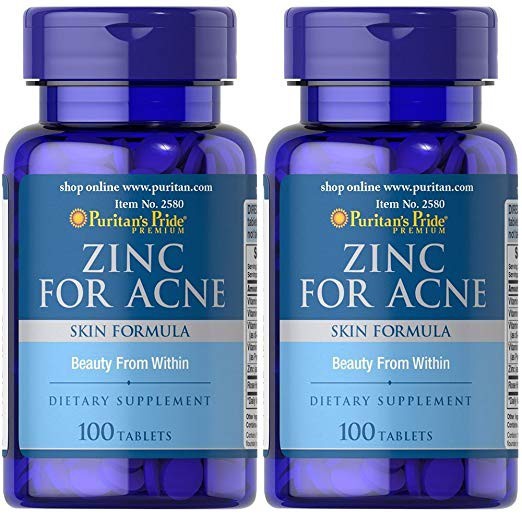
With its anti inflammatory houses, zinc is frequently touted as a technique to lessen zits lesions and redness.
According to a 2021 article, studies is conflicting on zinc’s effectiveness. However, someone can anticipate higher consequences whilst making use of the complement without delay to the pores and skin. The motive is that after taken orally, a number of the complement receives damaged down withinside the digestion technique and can lose efficacy alongside the way.
— How to apply zinc
People can follow zinc topically onto the pores and skin or take it thru complement form.
BEST HOME REMEDIES FOR SKIN
6. Green tea
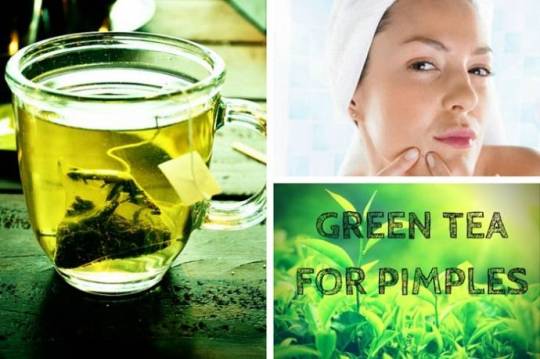
Green tea incorporates excessive concentrations of a collection of polyphenol antioxidants known as catechins.
Some humans with zits have an excessive amount of sebum, or herbal frame oils, of their pores and now no longer sufficient antioxidants. Antioxidants assist the frame spoil down chemical compounds and waste merchandise that may harm wholesome cells.
— Green tea additionally incorporates compounds which can assist to:
1.lessen the pores and skin’s sebum production
2.lessen P. acnes
3.lessen infection
— How to apply inexperienced tea
An character can both drink inexperienced tea or placed inexperienced tea extract on their pores and skin, aleven though researchers say modern-day proof is limited. However, one 2017 take a look at located a 79–89% discount in whiteheads and blackheads after the use of a polyphenol inexperienced tea extract for eight weeks. People can discover inexperienced tea in maximum meals shops. Green tea extract is extra tough to discover however to be had from a few fitness shops or on-line.
BEST HOME REMEDIES FOR SKIN HANDBOOK
7. Echinacea
Echinacea, additionally called crimson coneflower, can also additionally include compounds that assist damage viruses and micro organism, which include P. acnes.
Many humans agree with that echinacea can increase the immune gadget and decrease infection to combat off or save you infections, which include colds and flu. While there’s a few proof that echinacea can assist prevent the unfold of P. acnes and opposite infection as a result of micro organism, modern-day studies is minimal.
— How to apply echinacea
People can follow echinacea lotions to regions with zits lesions or take echinacea supplements. Echinacea merchandise are to be had from fitness shops or on-line as lotions or supplements.
8. Rosemary

Rosemary extract, or Rosmarinus officinalis, incorporates chemical compounds and compounds with antioxidant, antibacterial, and anti inflammatory houses. Further studies is wanted to degree its effectiveness.However, a 2016 studies article advised that rosemary extract can lessen infection from the zits-inflicting micro organism P. acnes.
9. Purified bee venom
Although it is now no longer wildly to be had, purified bee venom incorporates antibacterial houses.
In a 2016 take a look at, folks that carried out a gel containing purified bee venom to their face for six weeks noticed a discount of slight to slight zits lesions. Though extra studies is wanted, purified bee venom can be a useful destiny factor in zits medication.
10. Coconut oil
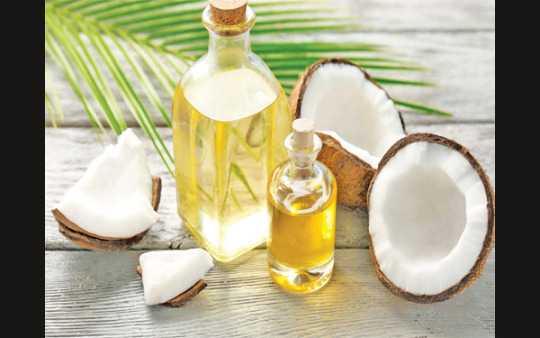
Like a few different herbal treatments listed, coconut oil incorporates anti inflammatory and antibacterial compounds.
These houses suggest that coconut oil can also additionally assist eliminate zits-inflicting micro organism and decrease the redness and swelling of zits. Due to its soothing and moisturizing effects, coconut oil can also additionally assist accelerate the restoration of open zits sores. However, centered studies on coconut oil as an zits deterrent is lacking.
— How to apply coconut oil
Try rubbing pure, virgin coconut oil without delay into the vicinity with zits. Look for coconut oil withinside the herbal ingredients segment of grocery shops or on-line. Along with domestic treatments, particular way of life modifications may have a effective impact on maintaining the frame wholesome, making the pores and skin much less oily, and lowering zits flare-ups.
11. Avoid touching zits
It may be very tempting, however touching zits sores will worsen the pores and skin, can also additionally make the pimple worse, and might unfold zits to different regions.
Touching, rubbing, squeezing, or popping zits sores also can introduce extra micro organism into the lesion, inflicting similarly infection. Squishing a pimple can push micro organism and particles similarly into the pores and skin, so the spot can also additionally come lower back worse than it changed into earlier than. Talk with a medical doctor approximately huge sores or the ones deep beneathneath the pores and skin to discover the way to deal with them safely.
12. Choosing the proper cleanser
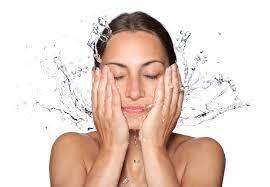
Many everyday soaps have an acidity, or pH, this is too excessive and might worsen the pores and skin, making zits worse.
Choose slight cleansers, rinses, and washes to lessen the hazard of zits flare-ups and allow sores heal.
13. Using oil-unfastened pores and skin care
Oil-primarily based totally or greasy merchandise can block pores, growing the hazard of clogged and developing zits sores.
Look for pores and skin care merchandise and cosmetics categorized as “oil-unfastened” or “noncomedogenic,” which include elements that permit pores to breathe.
14. Staying hydrated
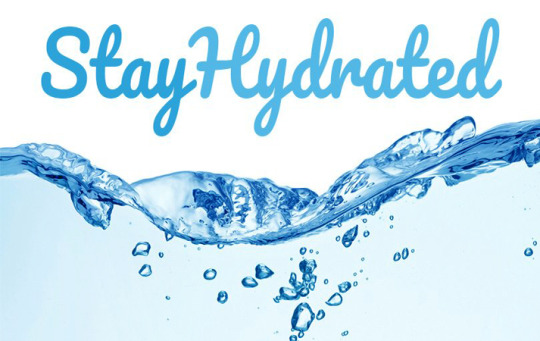
When the pores and skin is dry, it could grow to be indignant or broken, that may make zits worse. Staying hydrated additionally guarantees new pores and skin cells broaden successfully as sores heal.
There isn’t anyt any widespread day by day endorsed water consumption due to the fact every man or woman’s water desires range relying on age, how lively they are, temperature, and any scientific situations.
Making a focused attempt to drink extra water for the duration of the day is a great beginning point.
BEST HANDBOOK FOR SKINCARE
15. Reducing stress
The American Academy of Dermatology lists strain as a likely purpose of zits flare-ups.
Stress reasons ranges of the hormone androgen to increase. Androgen stimulates hair follicles and oil glands in pores, growing the hazard of zits.
Tips for coping with stress include:
1.speakme with family, friends, a medical doctor, or different supportive humans.
2.getting sufficient sleep.
3.consuming a healthful, balanced diet.
4.workout regularly.
5.proscribing alcohol and caffeine consumption.
6.practising deep breathing, yoga, mindfulness, or meditation.
2 notes
·
View notes
Text
What is the best way to get rid of acne?
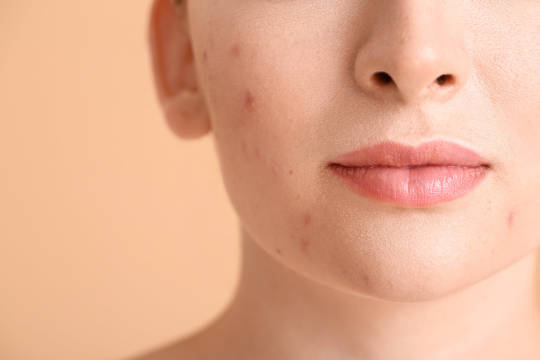
What exactly is acne?
Acne is a frequent inflammatory skin disorder. Many business listings there are numerous forms of acne, but the most prevalent is 'acne vulgarism,' which is the acne that causes pimples. Oily skin is common with this form of acne, and the skin can become uncomfortable and heated to the touch. The oil becomes stuck in the pores of our skin, causing inflammation and spots.
What are the causes of acne?
Acne affects almost everyone at some point in their lives, and it isn't just confined to teens; adults are also susceptible to acne.
Acne in teenagers
Hormones are the most prevalent cause of acne in teens. The thickening of 'sebum' might be caused by hormonal shifts as we progress through puberty.
Our skin produces sebum, which is natural oil. When sebum is overly thick, it is difficult for the body to push it up and out of the skin, resulting in clogged pores and pimples business listings.
Acne in adults
Adult acne can be caused by imbalanced hormones, but it is most commonly caused by dietary variables that lead to sebum thickness, excess bacteria, and inflammation. The thickness of sebum and the likelihood of acne can both be reduced by changing your diet.
Acne due to a poor diet
Our skin suffers from a poor diet and vitamin deficits. Toxins will not be expelled through the intestines in a timely manner if we don't eat enough fiber, and they will be pushed out via the skin, adding to inflammation and acne.
Nutrient shortages can also cause hormone abnormalities, which show up on the skin as pimples and irritation free listing.
Acne prevention
Diet
As teens and adults, our nutrition plays a critical part in acne control. We all know we should consume our fruits and veggies, but for acne sufferers, this is especially crucial. Fruit and vegetable nutrients and fibers have a very pleasant and relaxing impact on the skin.
It's also crucial to consume the correct oils in your diet. Inflammation is caused by consuming too many Trans and hydrogenated fats. Other oils, such as cold-pressed oils, nuts and seeds, and omega 3, on the other hand, have an anti-inflammatory effect and can help reduce the incidence of acne.
Face cleansing products made from natural ingredients
Using natural cleaning products that are kind on the environment. Get into a washing practise that helps to keep your pores free, which helps to prevent pimples from forming. Choose items with anti-inflammatory and anti-bacterial properties.
Acne-friendly foods
Pumpkin seeds
Pumpkin seeds are high in zinc, which aids in the regulation of testosterone levels in the body. Too much testosterone can lead to blocked pores and heavy sebum. Magnesium and good fats are also found in pumpkin seeds. Magnesium is required for the proper management of insulin and the regulation of blood sugar levels. Acne can be exacerbated by blood sugar levels that are too high or uncontrolled.
Fresh fruit
Vitamin C is found in fresh fruit, and it aids in the treatment of acne in a variety of ways.
Vitamin C functions as an antioxidant and aids in skin healing and restoration. Vitamin C is also required for the synthesis of collagen. Simply boosting your Vitamin C consumption can have a significant impact on the health of your skin and other collagen-dependent bodily components.
Fruit also encourages the formation of beneficial bacteria in your stomach, which has the greatest impact on the health of your skin as an adult. Inflammation can be controlled with a healthy gut and gut micro biota, decreasing some of the detrimental impacts of acne.
Beans, lentils, nuts, and seeds
Blood sugar surges can be avoided by eating protein with each meal or snack, such as beans, lentils, nuts, and seeds. When your blood sugar levels rise, your body produces a chemical known as 'insulin-like growth factor.' When we have too much 'insulin-like growth factor,' our skin glands create more oil, which can contribute to blocked pores and acne.
High fiber diet
Fiber is necessary for removing toxins from our bodies through regular bowel movements, and this process helps prevent toxins from being pushed out through the skin, which can lead to acne.
Fiber also feeds the healthy bacteria in the stomach, which assists in toxin clearance, and it has an anti-inflammatory impact on the entire body, including the skin. You should consume 7-9 pieces of vegetables and fruits each day, and whole grains rather than processed grains should be consumed.
Acne supplements that work
Antioxidants
Antioxidants are substances that scavenge free radicals. In our bodies, 'free radicals' are unstable atoms that may harm cells, cause sickness, ageing, inflammation, and acne.
Vitamin C, Vitamin E, and beta-carotene, as well as Selenium, Vitamin A, and lutein, are the finest antioxidant vitamins.
Antioxidants have been demonstrated to assist in the reduction of inflammation in a variety of ways. Because acne is an inflammatory disorder, the more antioxidants you consume, the better. Antioxidants help decrease inflammation. Collagen is a protein that forms the major structural and elastic component of our skin, and these free-radical scavenging minerals are essential for collagen formation in the skin.
Did you know that collagen supplements are manufactured by boiling cow bones and skin? 'The truth about collagen' explains more
Omega 3
Omega 3 fatty acids are essential for overall health, as well as the health of our skin. They have significant anti-inflammatory properties in the body and are essential for skin health. Daily omega 3 supplementation has been shown to alleviate acne in studies; however, algal oil is the vegan counterpart, has the same active components, and is a far nicer choice for the fish and the environment.
Turmeric & Cur cumin
Turmeric's main ingredient, cur cumin, has a multitude of anti-inflammatory properties. Cur cumin reduces inflammation on the skin and in the stomach by targeting the biological cause of inflammation. Reduced intestinal inflammation promotes the growth of probiotics, which helps control inflammation further down the immune system, resulting in positive effects on the skin and throughout the body.
1 note
·
View note
Text
The Ultimate Summer Skincare Routine for Oily Skin
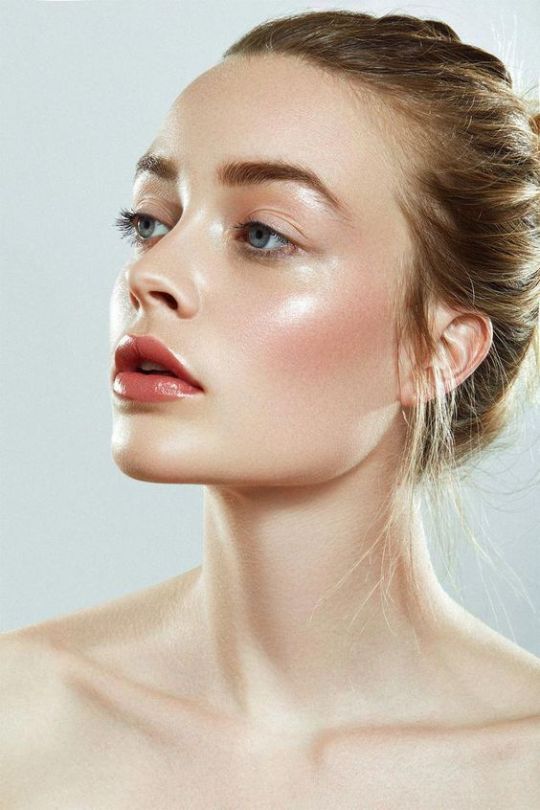
Summer is a season of warmth, outdoor activities, and sunshine. However, for those with oily skin, it can also be a time of increased greasiness, clogged pores, and breakouts. Managing oily skin during the hot and humid months requires a tailored summer skincare routine for oily skin that balances hydration with oil control. Here’s a comprehensive guide to crafting the perfect summer skincare routine for oily skin.
Understanding Oily Skin
Oily skin is characterized by overactive sebaceous glands that produce excess sebum. This can lead to a shiny complexion, enlarged pores, and a propensity for acne and summer tanning. During summer, the heat and humidity can exacerbate these issues, making it crucial to adapt your summer skincare routine for oily skin accordingly.
Step-by-Step Summer Skincare Routine for Oily Skin
1. Cleanse Gently but Thoroughly
Morning and Night: Start your day with a gentle, foaming cleanser that removes excess oil without stripping your skin of its natural moisture. Look for cleansers containing salicylic acid or tea tree oil, which help to keep pores clear and control oil production.
Recommended Products:
Cetaphil Pro Oil Removing Foam Wash: This gentle foaming wash effectively removes excess oil and impurities without over-drying the skin.
Neutrogena Oil-Free Acne Wash: Contains salicylic acid to help prevent breakouts while keeping the skin clear and fresh.
2. Tone to Balance
Morning and Night: Toning helps to remove any residual dirt and oil while restoring your skin’s pH balance. Opt for an alcohol-free toner with ingredients like witch hazel or niacinamide, which help to control oil and reduce the appearance of pores.
Recommended Products:
Thayers Alcohol-Free Witch Hazel Toner: This classic toner helps to tighten pores and reduce oiliness without causing irritation.
The Ordinary Glycolic Acid 7% Toning Solution: Offers mild exfoliation to improve skin texture and radiance.
3. Hydrate Lightly
Morning and Night: Even oily skin needs hydration, especially in summer. Choose a lightweight, oil-free moisturizer that provides adequate hydration without clogging pores. Gel-based moisturizers are excellent for oily skin as they absorb quickly and leave a matte finish.
Recommended Products:
Neutrogena Hydro Boost Water Gel: A popular choice for oily skin, this gel moisturizer is lightweight and hydrating.
Clinique Dramatically Different Hydrating Jelly: This oil-free, water-jelly formula helps to strengthen the skin’s moisture barrier.
4. Sun Protection
Morning: Sunscreen is a non-negotiable step in any skincare routine, particularly in summer. Opt for a broad-spectrum, oil-free sunscreen with at least SPF 30 to protect your skin from harmful UV rays without causing breakouts.
Recommended Products:
La Roche-Posay Anthelios Clear Skin Dry Touch Sunscreen SPF 60: This sunscreen is specifically designed for oily and acne-prone skin, providing high protection with a matte finish.
EltaMD UV Clear Broad-Spectrum SPF 46: Contains niacinamide to help calm the skin while providing sun protection.
5. Exfoliate Regularly
2-3 Times a Week: Regular exfoliation helps to remove dead skin cells that can clog pores and lead to breakouts. Use a gentle exfoliant with salicylic acid or glycolic acid to keep your skin smooth and clear. Avoid harsh scrubs that can irritate the skin if you have sensitive skin.
Recommended Products:
Paula’s Choice Skin Perfecting 2% BHA Liquid Exfoliant: This leave-on exfoliant unclogs pores and smooths the skin’s texture.
The Ordinary AHA 30% + BHA 2% Peeling Solution: A powerful exfoliating treatment that should be used sparingly for a clearer complexion.
6. Incorporate Treatment Serums
Night: Serums can provide targeted treatment for specific skin concerns. For oily skin, consider a serum with niacinamide to regulate oil production and reduce the appearance of pores, or a serum with retinol to prevent acne and improve skin texture.
Recommended Products:
The Ordinary Niacinamide 10% + Zinc 1%: This serum helps to control oil and minimize pores.
Differin Adapalene Gel 0.1%: A retinoid treatment that helps to prevent acne and improve skin tone.
7. Masking for Extra Care
Once a Week: A weekly clay mask can help to absorb excess oil and draw out impurities from the skin. Look for masks containing kaolin or bentonite clay for their oil-absorbing properties.
Recommended Products:
Aztec Secret Indian Healing Clay: A powerful clay mask that deeply cleanses the pores.
Origins Clear Improvement Active Charcoal Mask: Contains charcoal to draw out toxins and impurities.
Additional Tips for Managing Oily Skin in Summer
Stay Hydrated
Drinking plenty of water helps to keep your skin hydrated from within and can reduce the overproduction of oil.
Blotting Papers
Keep blotting papers handy to absorb excess oil throughout the day without disturbing your makeup.
Avoid Heavy Makeup
Opt for lightweight, non-comedogenic makeup products that won’t clog your pores. Mineral makeup is a great option for oily skin.
Diet Matters
Maintain a balanced diet rich in fruits, vegetables, and lean proteins. Avoid greasy and sugary foods that can trigger excess oil production.
Regular Exercise
Exercise promotes healthy blood circulation, but be sure to cleanse your skin immediately after sweating to prevent clogged pores.
Conclusion
Maintaining an effective summer skincare routine for oily skin involves a combination of gentle cleansing, targeted treatments, and diligent sun protection. By incorporating the right products and practices, you can manage oiliness and enjoy clear, healthy skin all summer long. Remember, consistency is key, and your skin will thank you for the extra care during the hot and humid months.
0 notes